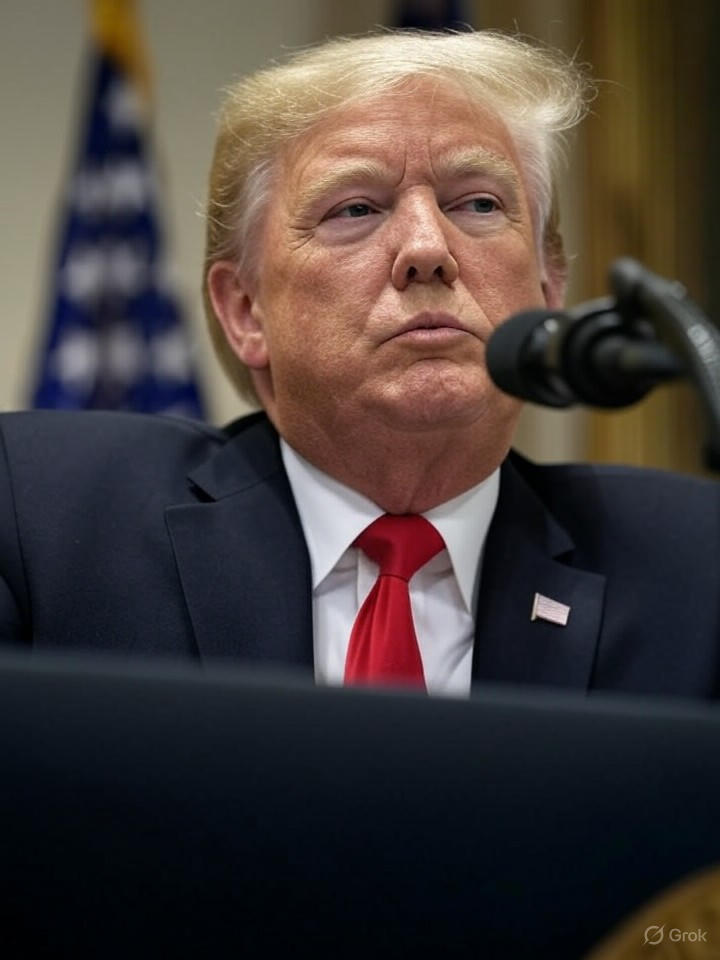In a bold move that could reshape the global semiconductor industry, President Donald Trump has announced plans to impose a 100% tariff on computer chips manufactured outside the United States, with a significant exemption for companies committing to domestic production. This policy, revealed in recent statements, aims to bolster American manufacturing and reduce reliance on foreign suppliers, particularly from Asia. According to reports from The Guardian, the tariff is expected to drive up costs for electronics and household goods, but chips produced in the U.S. would remain exempt, incentivizing investments in stateside facilities.
The announcement builds on earlier investigations into imported semiconductors, as detailed in an April 2025 article from The New York Times, which cited national security concerns as the impetus for scrutinizing chip and pharmaceutical imports. Trump’s latest threat, elaborated in an August 6 update from the same publication, specifies that the tariff won’t apply to businesses that have pledged to build and invest in the U.S., offering a lifeline to firms like TSMC and Intel that are already expanding American operations.
Industry Reactions and Immediate Fallout
Reactions from the tech sector have been swift and mixed. A Reuters report dated August 7, 2025, highlights Trump’s exemption clause, noting it spares companies manufacturing in the U.S. or those with firm commitments to do so, potentially benefiting players like Samsung, which has announced U.S. factory plans. However, smaller firms and those without domestic footprints face steep challenges, with potential price spikes for consumers estimated at 15-25% for electronics, according to posts on X analyzing the policy’s economic ripple effects.
On social platforms, sentiment underscores the disruption. Discussions on X, including analyses from users pointing to higher costs and supply chain delays, reflect concerns that the tariff could throttle innovation and lead to short-term shortages, as semiconductor fabrication buildouts take years. This echoes broader industry worries, with one X post estimating impacts on the global chip market valued at $627 billion in 2024, including over $190 billion in U.S. imports from Asia.
Economic Implications for Global Supply Chains
The policy’s potential to fragment supply chains is a key concern for insiders. As reported in a Yahoo Finance article from August 7, 2025, Trump’s 100% tariff has sparked confusion among businesses and trading partners, boosting stocks for leading U.S.-focused semiconductor companies while leaving smaller producers scrambling. The move could accelerate onshoring, but at the cost of immediate margin pressures and higher consumer prices, particularly in AI and automotive sectors reliant on advanced GPUs.
Critics argue this echoes past U.S. strategies that inadvertently boosted foreign self-reliance, as seen in X posts referencing how previous tariffs pushed China toward semiconductor independence. A deep dive into Reddit threads, such as those on r/technology, reveals community debates on the tariff’s feasibility, with users citing potential job losses in assembly-dependent regions and retaliatory measures from trade partners like Taiwan and South Korea.
Strategic Shifts and Company Responses
Major players are already adapting. Intel, for instance, has ramped up U.S. investments under the CHIPS Act, positioning itself to avoid tariffs, per insights from PC Gamer’s August 7 coverage, which warns of spiking tech prices but notes no charges for firms building on American soil. Similarly, Nvidia faces constraints, as historical X commentary recalls how U.S. export controls limited sales to China, tying hands in key markets.
For industry insiders, the tariff represents a high-stakes gamble to reclaim manufacturing dominance. Analysts predict a surge in domestic fab construction, potentially adding billions in investments, but warn of inflationary pressures amid ongoing geopolitical tensions. As one Reuters piece from August 6 emphasizes, the exemption encourages commitments, yet enforcement details remain vague, leaving room for lobbying and adjustments.
Long-Term Outlook and Policy Challenges
Looking ahead, the tariff could redefine U.S. tech competitiveness, fostering innovation clusters in states like Arizona and Texas. However, challenges abound, including skilled labor shortages and the multi-year timeline for new facilities, as highlighted in X discussions on production delays. Economists project that while it may curb imports, it risks alienating allies and escalating trade wars, with Asia’s semiconductor hubs facing revenue hits.
Ultimately, this policy underscores a pivotal shift toward protectionism in critical technologies. As the administration refines its approach, stakeholders will watch closely for implementation timelines and any softening of the 100% rate. With the global economy at stake, the coming months will test whether this sledgehammer tactic strengthens America’s position or merely disrupts an already fragile supply network.




 WebProNews is an iEntry Publication
WebProNews is an iEntry Publication